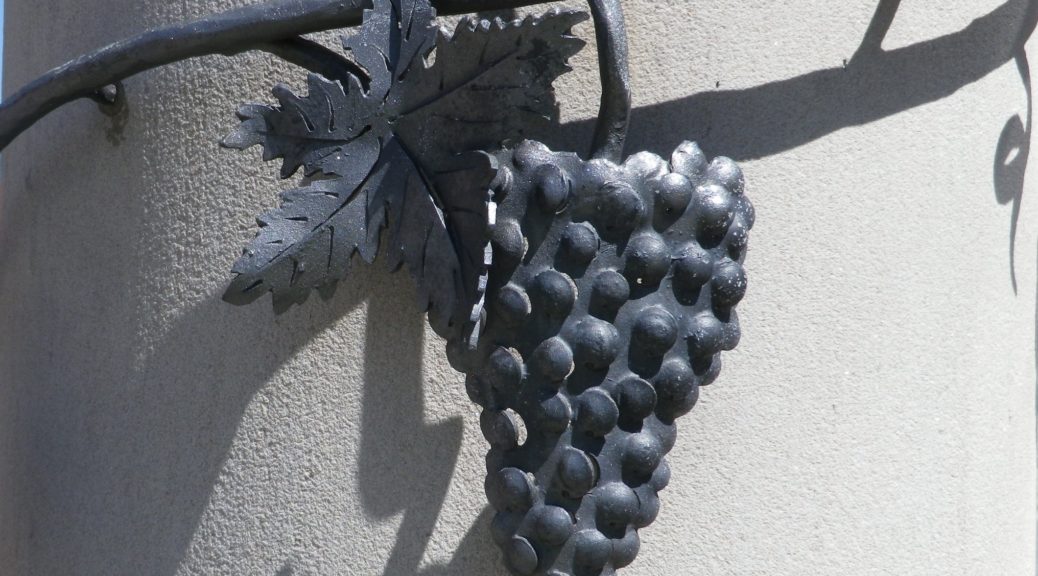What I Learned
Wuerttemberg is a large and diverse wine region in Germany. It stretches from the north at Bad Mergentheim (only 25 miles south of Wuerzburg) then south to Lake Constance; from the east by Lindau, to the west, just north of Pforzheim. It has several main districts, (Bereich Kocher-Jagst-Tauber; Wuerttembergisch Unterland; Bereich Remstal-Stuttgart; Bereich Obere Neckar and two small areas on the Bodensee (Lake Constance), one part of which is technically in the German state of Bavaria). Within a couple of these districts, several major growing zones exist.
Throughout this south-central German region red varietals tend to predominate. Most people are surprised to learn that, given that Germany is famous for its Riesling wines. But more surprising to me, given the region’s climate, is that red varietals do especially well here. In fact, several varietals are almost unique to this region, in that they can’t easily be found elsewhere in Germany, or even the world. These include the Lemberger and the Trollinger varietals. The light Trollinger is a special Swabian favorite in the summer, when it is often served slightly chilled. But on the other hand, it is also often blended with Lemberger, a heartier red wine. Two other varietals, both hearty reds, include Dornfelder and Acolon (my personal favorite), both developed at the nearby State Education and Research Institute for Viticulture and Pomology (Staatliche Lehr- und Versuchsanstalt für Wein- und Obstbau) in Weinsberg, just outside Heilbronn.
Wuerttembergisch Unterland is the name of the wine district north of Stuttgart and the Rems River. It includes Marbach and Benningen facing each other on opposite sides of the Neckar. Then Hoheneck (part of Ludwigsburg) and its counterparts on the opposite shore, Neckarweiher and Poppenweiler. The northern part of this district reaches Heilbronn’s northern suburbs.
This post covers a small zone in the middle of the Wuerttembergisch Unterland district, the Stromberg wine zone. Located south of Heilbronn, and west of the Neckar, dominated by the Stromberg mountain range, which combined with the Heuchelberg mountain range, (yet another wine zone in the Wuerttembergisch Unterland), forms an extensive nature park. Not surprisingly, both the Stromberg and the Heuchelberg zones are in the area known as the land of 1000 hills. The hills are perfect for planting vineyards!
Kirchheim am Neckar, Erligheim, Bonnigheim, Freudental, Loechgau, Hofen, Ochsenbach, Guendelbach, Horrheim, Hohenhaslach, and south to the Enz River, form part of the Stromberg zone. This area is distinct from some of the vineyards directly on the Neckar River, such as in parts of Walheim. Being further away from the river results in a slightly cooler climate in the winter, and warmer in the summer. Some of the locally renowned named vineyard parcels include the Kirchberg, Sonnenberg, and Lerchenberg.
What I Tasted
2016 Riesling Boennigheimer Sonnenberg, Trocken, QbA, Weingaertner Stromberg Zabergaeu (Boennigheim): A dry white wine with medium minus gold color; nose of spice, floral, grass, and slightly fruity, with spice, floral and grass flavors; a medium plus acidity with a tart finish.
2016 Riesling, Trocken, Weingut Mayer (Erligheim): A dry white wine with medium plus gold color, green grape, chalk and slight citrus nose, with grape, spice, and slight gooseberry flavors; medium acidity, with a crisp finish.
2016 Lemberger, Spaetlese, Qualitaetswein, Trocken, Weingut Funk, (Loechgau): A dry red wine with medium ruby color; honeysuckle, and dried cherry nose with a hint of tobacco, with vanilla, honey, floral, and red berry flavors; medium tannins.
2015 Lemberger, Boennigheimer Sonnenberg, Trocken, Deutscher Qualitaetswein, Weingaertner Stromberg Zabergaeu: A dry red wine with dark garnet color; cherry, and green wood on the nose, with sweet cherry, vanilla, and vegetal flavors; medium tannins.
2014 Regent, Spaetlese, Trocken, Weingut Mayer (Erligheim): A dry red wine with dark garnet color; jammy grape, and brioche nose, with ripe grape, smoke and vanilla flavors, medium minus tannins, very smooth
